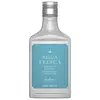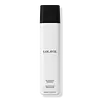What's inside
What's inside
 Key Ingredients
Key Ingredients

 Benefits
Benefits

 Concerns
Concerns

 Ingredients Side-by-side
Ingredients Side-by-side

Water
Skin ConditioningSodium Cocoyl Isethionate
CleansingSodium Lauroyl Methyl Isethionate
CleansingGlycerin
HumectantSodium Lauroyl Lactylate
EmulsifyingDecyl Glucoside
CleansingAcrylates Crosspolymer-4
Emulsion StabilisingDisteareth-75 Ipdi
Artocarpus Heterophyllus Fruit Extract
Skin ConditioningHydrolyzed Vegetable Protein
Skin ConditioningHydrolyzed Pea Protein
EmollientOpuntia Ficus-Indica Seed Oil
EmollientLactobacillus Ferment
Skin ConditioningSodium PCA
HumectantMaltol
MaskingPolyquaternium-80
CleansingPhospholipids
Skin ConditioningPolyquaternium-16
Lactic Acid
BufferingUrea
BufferingGlycine
BufferingNiacinamide
SmoothingAllantoin
Skin ConditioningAlanine
MaskingSerine
MaskingSodium Hyaluronate
HumectantTocopheryl Acetate
AntioxidantPotassium Hydroxide
BufferingGlycol Distearate
EmollientAloe Barbadensis Leaf Juice
Skin ConditioningSqualane
EmollientAmaranthus Caudatus Seed Extract
Skin ConditioningMauritia Flexuosa Fruit Oil
Skin ConditioningHelianthus Annuus Seed Oil
EmollientPanthenol
Skin ConditioningGuar Hydroxypropyltrimonium Chloride
Skin ConditioningRosmarinus Officinalis Leaf Extract
AntimicrobialDiisostearyl Malate
EmollientTocopherol
AntioxidantCitric Acid
BufferingTrisodium Ethylenediamine Disuccinate
Sodium Phytate
Potassium Sorbate
PreservativeSodium Benzoate
MaskingPhenoxyethanol
PreservativeParfum
MaskingWater, Sodium Cocoyl Isethionate, Sodium Lauroyl Methyl Isethionate, Glycerin, Sodium Lauroyl Lactylate, Decyl Glucoside, Acrylates Crosspolymer-4, Disteareth-75 Ipdi, Artocarpus Heterophyllus Fruit Extract, Hydrolyzed Vegetable Protein, Hydrolyzed Pea Protein, Opuntia Ficus-Indica Seed Oil, Lactobacillus Ferment, Sodium PCA, Maltol, Polyquaternium-80, Phospholipids, Polyquaternium-16, Lactic Acid, Urea, Glycine, Niacinamide, Allantoin, Alanine, Serine, Sodium Hyaluronate, Tocopheryl Acetate, Potassium Hydroxide, Glycol Distearate, Aloe Barbadensis Leaf Juice, Squalane, Amaranthus Caudatus Seed Extract, Mauritia Flexuosa Fruit Oil, Helianthus Annuus Seed Oil, Panthenol, Guar Hydroxypropyltrimonium Chloride, Rosmarinus Officinalis Leaf Extract, Diisostearyl Malate, Tocopherol, Citric Acid, Trisodium Ethylenediamine Disuccinate, Sodium Phytate, Potassium Sorbate, Sodium Benzoate, Phenoxyethanol, Parfum
Lactobacillus/Arundinaria Gigantea Ferment Filtrate
Skin ConditioningSodium Lauroyl Methyl Isethionate
CleansingLactobacillus Ferment
Skin ConditioningCocamidopropyl Betaine
CleansingGlycerin
HumectantSodium Cocoyl Isethionate
CleansingSodium Lauroyl Sarcosinate
CleansingSalvia Hispanica Seed Extract
EmollientCitric Acid
BufferingGlycosphingolipids
EmollientPisum Sativum Peptide
Skin ConditioningCitrus Limon Fruit Extract
MaskingMentha Piperita Leaf Extract
Skin ConditioningSaccharum Officinarum Extract
MoisturisingZingiber Officinale Root Extract
MaskingNiacinamide
SmoothingPanthenol
Skin ConditioningSaccharomyces/Copper Ferment
Skin ConditioningSaccharomyces/Iron Ferment
Skin ConditioningSaccharomyces/Magnesium Ferment
Saccharomyces/Zinc Ferment
Skin ConditioningPyrus Malus Fruit Extract
Skin ConditioningBiotin
AntiseborrhoeicCaffeine
Skin ConditioningMelatonin
AntioxidantCamellia Sinensis Leaf Extract
AntimicrobialHexapeptide-11
Skin ConditioningPolyquaternium-10
Betaine
HumectantParfum
MaskingLinalool
PerfumingLimonene
PerfumingLactobacillus/Arundinaria Gigantea Ferment Filtrate, Sodium Lauroyl Methyl Isethionate, Lactobacillus Ferment, Cocamidopropyl Betaine, Glycerin, Sodium Cocoyl Isethionate, Sodium Lauroyl Sarcosinate, Salvia Hispanica Seed Extract, Citric Acid, Glycosphingolipids, Pisum Sativum Peptide, Citrus Limon Fruit Extract, Mentha Piperita Leaf Extract, Saccharum Officinarum Extract, Zingiber Officinale Root Extract, Niacinamide, Panthenol, Saccharomyces/Copper Ferment, Saccharomyces/Iron Ferment, Saccharomyces/Magnesium Ferment, Saccharomyces/Zinc Ferment, Pyrus Malus Fruit Extract, Biotin, Caffeine, Melatonin, Camellia Sinensis Leaf Extract, Hexapeptide-11, Polyquaternium-10, Betaine, Parfum, Linalool, Limonene
Ingredients Explained
These ingredients are found in both products.
Ingredients higher up in an ingredient list are typically present in a larger amount.
Citric Acid is an alpha hydroxy acid (AHA) naturally found in citrus fruits like oranges, lemons, and limes.
Like other AHAs, citric acid can exfoliate skin by breaking down the bonds that hold dead skin cells together. This helps reveal smoother and brighter skin underneath.
However, this exfoliating effect only happens at high concentrations (20%) which can be hard to find in cosmetic products.
Due to this, citric acid is usually included in small amounts as a pH adjuster. This helps keep products slightly more acidic and compatible with skin's natural pH.
In skincare formulas, citric acid can:
While it can provide some skin benefits, research shows lactic acid and glycolic acid are generally more effective and less irritating exfoliants.
Most citric acid used in skincare today is made by fermenting sugars (usually from molasses). This synthetic version is identical to the natural citrus form but easier to stabilize and use in formulations.
Read more about some other popular AHA's here:
Learn more about Citric AcidGlycerin is already naturally found in your skin. It helps moisturize and protect your skin.
A study from 2016 found glycerin to be more effective as a humectant than AHAs and hyaluronic acid.
As a humectant, it helps the skin stay hydrated by pulling moisture to your skin. The low molecular weight of glycerin allows it to pull moisture into the deeper layers of your skin.
Hydrated skin improves your skin barrier; Your skin barrier helps protect against irritants and bacteria.
Glycerin has also been found to have antimicrobial and antiviral properties. Due to these properties, glycerin is often used in wound and burn treatments.
In cosmetics, glycerin is usually derived from plants such as soybean or palm. However, it can also be sourced from animals, such as tallow or animal fat.
This ingredient is organic, colorless, odorless, and non-toxic.
Glycerin is the name for this ingredient in American English. British English uses Glycerol/Glycerine.
Learn more about GlycerinLactobacillus Ferment is created by fermenting the Lactobacillus bacteria. It helps keep our skin's natural barrier and microbiome healthy.
Studies show lactobacillus ferment to be effective at repairing the skin barrier. Having a healthy skin barrier helps keep your skin healthy and hydrated. It also protects against bad bacteria.
As a probiotic/prebiotic/postbiotic, Lactobacillus ferment can help regular our natural biome. In fact, one study found a lack of diversity in our natural skin biome can trigger acne.
Learn more about Lactobacillus FermentNiacinamide is a multitasking form of vitamin B3 that strengthens the skin barrier, reduces pores and dark spots, regulates oil, and improves signs of aging.
And the best part? It's gentle and well-tolerated by most skin types, including sensitive and reactive skin.
You might have heard of "niacin flush", or the reddening of skin that causes itchiness. Niacinamide has not been found to cause this.
In very rare cases, some individuals may not be able to tolerate niacinamide at all or experience an allergic reaction to it.
If you are experiencing flaking, irritation, and dryness with this ingredient, be sure to double check all your products as this ingredient can be found in all categories of skincare.
When incorporating niacinamide into your routine, look out for concentration amounts. Typically, 5% niacinamide provides benefits such as fading dark spots. However, if you have sensitive skin, it is better to begin with a smaller concentration.
When you apply niacinamide to your skin, your body converts it into nicotinamide adenine dinucleotide (NAD). NAD is an essential coenzyme that is already found in your cells as "fuel" and powers countless biological processes.
In your skin, NAD helps repair cell damage, produce new healthy cells, support collagen production, strengthen the skin barrier, and fight environmental stressors (like UV and pollution).
Our natural NAD levels start to decline with age, leading to slower skin repair, visible aging, and a weaker skin barrier. By providing your skin niacinamide, you're recharging your skin's NAD levels. This leads to stronger, healthier, and younger looking skin.
Another name for vitamin B3 is nicotinamide. This vitamin is water-soluble and our bodies don't store it. We obtain Vitamin B3 from either food or skincare. Meat, fish, wheat, yeast, and leafy greens contain vitamin B3.
The type of niacinamide used in skincare is synthetically created.
Learn more about NiacinamidePanthenol is a common ingredient that helps hydrate and soothe the skin. It is found naturally in our skin and hair.
There are two forms of panthenol: D and L.
D-panthenol is also known as dexpanthenol. Most cosmetics use dexpanthenol or a mixture of D and L-panthenol.
Panthenol is famous due to its ability to go deeper into the skin's layers. Using this ingredient has numerous pros (and no cons):
Like hyaluronic acid, panthenol is a humectant. Humectants are able to bind and hold large amounts of water to keep skin hydrated.
This ingredient works well for wound healing. It works by increasing tissue in the wound and helps close open wounds.
Once oxidized, panthenol converts to pantothenic acid. Panthothenic acid is found in all living cells.
This ingredient is also referred to as pro-vitamin B5.
Learn more about PanthenolParfum is a catch-all term for an ingredient or more that is used to give a scent to products.
Also called "fragrance", this ingredient can be a blend of hundreds of chemicals or plant oils. This means every product with "fragrance" or "parfum" in the ingredients list is a different mixture.
For instance, Habanolide is a proprietary trade name for a specific aroma chemical. When used as a fragrance ingredient in cosmetics, most aroma chemicals fall under the broad labeling category of “FRAGRANCE” or “PARFUM” according to EU and US regulations.
The term 'parfum' or 'fragrance' is not regulated in many countries. In many cases, it is up to the brand to define this term.
For instance, many brands choose to label themselves as "fragrance-free" because they are not using synthetic fragrances. However, their products may still contain ingredients such as essential oils that are considered a fragrance by INCI standards.
One example is Calendula flower extract. Calendula is an essential oil that still imparts a scent or 'fragrance'.
Depending on the blend, the ingredients in the mixture can cause allergies and sensitivities on the skin. Some ingredients that are known EU allergens include linalool and citronellol.
Parfum can also be used to mask or cover an unpleasant scent.
The bottom line is: not all fragrances/parfum/ingredients are created equally. If you are worried about fragrances, we recommend taking a closer look at an ingredient. And of course, we always recommend speaking with a professional.
Learn more about ParfumSodium cocoyl isethionate is a natural ingredient from coconut oil. It is an ultra gentle cleanser that gives a nice foam without drying the skin or impacting the skin barrier.
The amount of foam created depends on the amount of sodium cocoyl isethionate used in the product.
This ingredient also helps improve the spreadability of a product.
Learn more about Sodium Cocoyl IsethionateSodium Lauroyl Methyl Isethionate is a cleansing ingredient. It is a surfactant, meaning it helps gather dirt, oil, and other pollutants. This helps them be rinsed away easily.